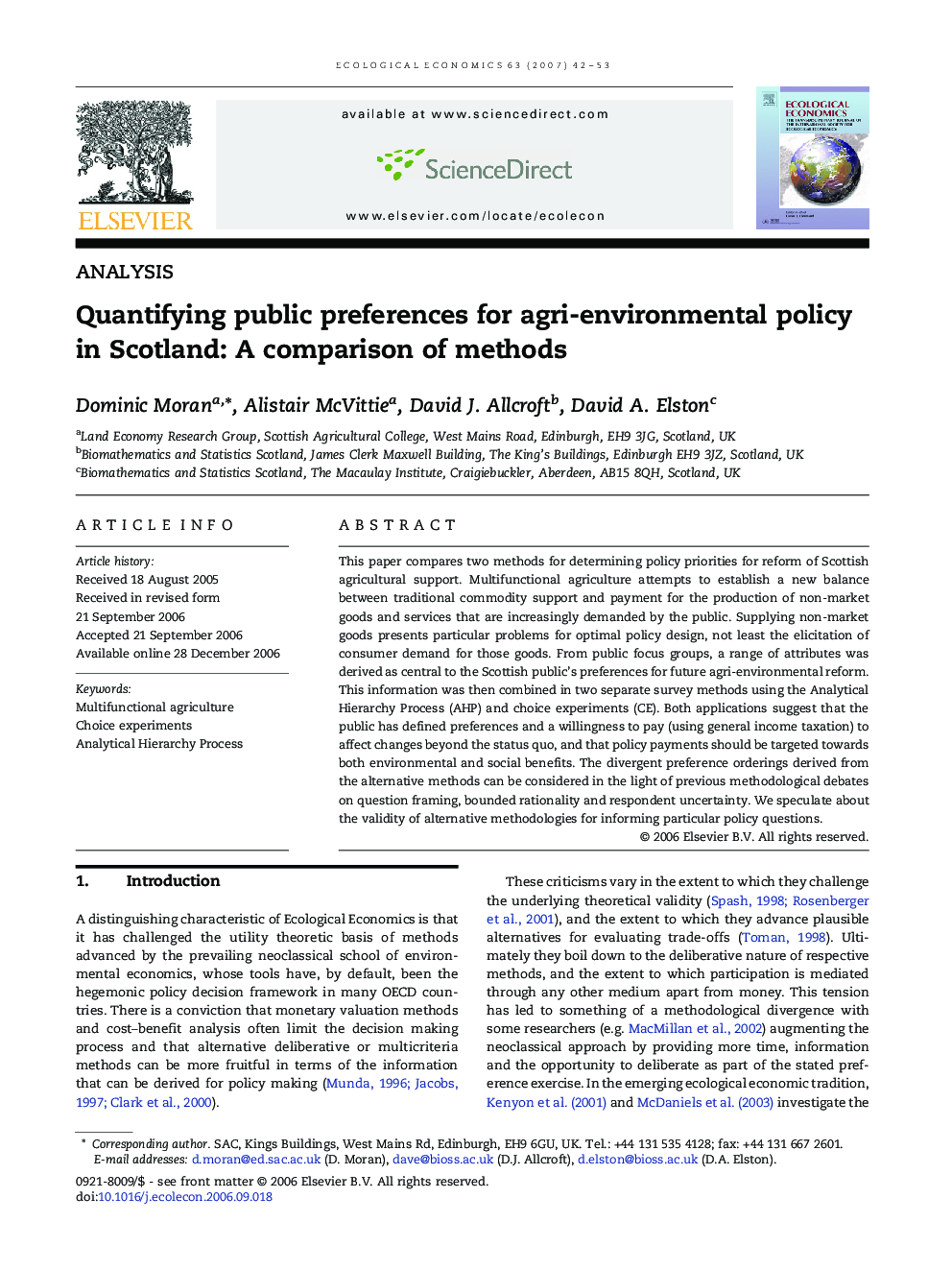| Article ID | Journal | Published Year | Pages | File Type |
|---|---|---|---|---|
| 5051636 | Ecological Economics | 2007 | 12 Pages |
This paper compares two methods for determining policy priorities for reform of Scottish agricultural support. Multifunctional agriculture attempts to establish a new balance between traditional commodity support and payment for the production of non-market goods and services that are increasingly demanded by the public. Supplying non-market goods presents particular problems for optimal policy design, not least the elicitation of consumer demand for those goods. From public focus groups, a range of attributes was derived as central to the Scottish public's preferences for future agri-environmental reform. This information was then combined in two separate survey methods using the Analytical Hierarchy Process (AHP) and choice experiments (CE). Both applications suggest that the public has defined preferences and a willingness to pay (using general income taxation) to affect changes beyond the status quo, and that policy payments should be targeted towards both environmental and social benefits. The divergent preference orderings derived from the alternative methods can be considered in the light of previous methodological debates on question framing, bounded rationality and respondent uncertainty. We speculate about the validity of alternative methodologies for informing particular policy questions.
